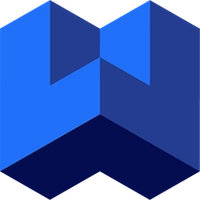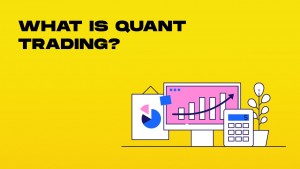Introduction to Quant Trading
Quantitative trading, often referred to as quant trading, is a sophisticated approach to trading that leverages mathematical and statistical models to identify and execute profitable trades. At its core, quant trading involves the use of computer algorithms and programs to analyze vast amounts of data, enabling traders to make informed decisions based on empirical evidence rather than intuition.
Quant traders rely heavily on historical data and real-time market data to develop and rigorously test their trading strategies. This data-driven approach is employed by a wide range of market participants, including investment firms, hedge funds, and individual traders, to execute trades and manage risk effectively.
Quant trading strategies are versatile and can be applied to various asset classes, such as stocks, bonds, commodities, and currencies. By using statistical analysis and risk management techniques, quant traders aim to optimize their trading performance and achieve consistent returns.
The field of quantitative trading is rapidly evolving, requiring practitioners to have a deep understanding of mathematical and statistical models. Staying up-to-date with the latest developments in quantitative trading and machine learning is crucial for success in this dynamic environment. Quant trading not only helps in identifying profitable trades but also allows for their automatic execution, making it a key area of focus for investment professionals and institutional investors.
Quant Trading Defined: Beyond the Buzzwords
Quantitative trading (quant trading) uses computer algorithms to identify and execute trading opportunities based on mathematical models. Unlike discretionary trading, where humans make decisions based on intuition and research, quant trading relies on data-driven strategies executed with precision and speed.
At its core, quant trading involves:
-
Collecting vast amounts of market data
-
Creating statistical models to identify patterns
-
Utilizing data mining techniques to analyze financial data
-
Implementing rules-based trading strategies
-
Executing trades automatically with minimal human intervention
To pursue a career as a quant trader, firms typically seek candidates with advanced educational credentials in a quantitative subject, such as mathematics or statistics. A master's degree or Ph.D. in these fields is often required to ensure candidates possess the necessary skill set for the role.
The Role of a Quant Trader
A quant trader is a specialized professional who uses mathematical and statistical models to develop and execute trading strategies. These traders typically work for investment firms, hedge funds, and other financial institutions, where they play a crucial role in driving trading performance and managing risk.
Quant traders are responsible for developing and testing sophisticated trading models, as well as executing trades based on these models. They must have a strong grasp of mathematical and statistical concepts, along with proficiency in programming languages such as Python and C++. This technical expertise allows them to analyze market data, identify patterns, and develop complex trading models.
In addition to their technical skills, quant traders must stay abreast of the latest advancements in quantitative trading and machine learning. This continuous learning is essential for refining their strategies and maintaining a competitive edge in the market.
Effective communication is another critical aspect of a quant trader’s role. They must be able to articulate complex trading strategies to non-technical stakeholders, ensuring that everyone involved understands the rationale behind their decisions.
Working in a fast-paced and dynamic environment, quant traders must be adept at managing risk and optimizing trading performance. Their ability to work with large datasets and develop robust trading models is key to their success in the field of quantitative trading.
How Quant Trading Works: The Process Breakdown
Strategy Development
Every quant system begins with a hypothesis about market behavior. You develop a mathematical model using historical data and alternative datasets, such as social media sentiment and sensor data, to test if certain patterns consistently lead to profitable opportunities.
Backtesting
Before risking real money, you validate your strategy against historical data. This process reveals how your strategy would have performed in the past—though past performance never guarantees future results, especially when transitioning from backtesting to live markets.
Implementation
Once validated, the strategy is coded into algorithms and integrated into automated trading systems that can:
-
Monitor market conditions in real-time
-
Identify potential trades based on predetermined criteria
-
Execute orders automatically
-
Manage position sizing and risk parameters
Execution and Optimization
As the algorithm runs, it continuously refines its approach based on performance data, utilizing a systematic approach to execution and optimization. Modern quant systems often incorporate machine learning to adapt to changing market conditions.
Common Quant Trading Strategies
| Strategy | Description | Typical Timeframe |
|---|---|---|
| Statistical Arbitrage | Exploits price inefficiencies between related securities | Minutes to days |
| Trend Following | Identifies and trades in the direction of market momentum | Days to months |
| Mean Reversion | Assumes prices will return to their historical average | Hours to weeks |
| High-Frequency Trading | Executes large volumes of trades in milliseconds | Milliseconds to seconds |
Tools of the Trade: What Quants Use
You don’t need a supercomputer to start with quantitative methods, but you do need specific tools. A strong foundation in computer science is essential, as it equips you with the programming languages and technical skills required for developing models and understanding automated trading systems in a digital trading environment.
Programming Languages
Python dominates the quant world due to its extensive libraries like Pandas, NumPy, and scikit-learn, which are essential for developing computer programs used in trading algorithms. Other languages include R, C++, and MATLAB.
Data Sources
Quality data is the foundation of successful quant strategies, with real-time data feeds being crucial for quant traders. Sources range from paid providers like Bloomberg and Reuters to free APIs from Yahoo Finance and Alpha Vantage.
Backtesting Platforms
Tools like QuantConnect, Backtrader, and Zipline, along with various build tools, let you test strategies without risking capital. They simulate how your algorithm would perform against historical market conditions.
Quant Trading and Machine Learning
Quant trading and machine learning are closely intertwined fields that both rely on mathematical and statistical models to analyze market data and make informed trading decisions. Machine learning algorithms, in particular, have become invaluable tools for quant traders, enabling them to develop and test sophisticated trading strategies with greater precision.
Quant traders use a variety of machine learning techniques, such as neural networks and decision trees, to analyze market data and identify profitable trading opportunities. These algorithms can process large amounts of data, uncovering patterns and trends that might be invisible to traditional analysis methods.
Machine learning also plays a crucial role in optimizing quant trading strategies and minimizing risk. By continuously learning from new data, these algorithms can adapt to changing market conditions, enhancing the robustness and effectiveness of trading models.
To leverage machine learning effectively, quant traders must have a strong understanding of relevant techniques and programming languages like Python and C++. This technical proficiency allows them to develop and test trading models that can execute trades automatically and optimize trading performance.
Staying current with the latest developments in machine learning and quant trading is essential for investment professionals and institutional investors. As these fields continue to evolve, the integration of machine learning into quant trading strategies will likely become even more prevalent, driving innovation and improving trading outcomes.
The Advantages of Quant Trading
Emotion-Free Execution
Algorithms don't experience fear, greed, or the urge to revenge trade after losses. They stick to the strategy regardless of market volatility.
Processing Power
Quant systems can analyze more data points in seconds than a human could evaluate in months, identifying opportunities invisible to manual analysis.
Diversification at Scale
Algorithms can monitor and trade multiple markets and instruments simultaneously, providing true diversification benefits.
The Limitations and Risks
Model Risk
All models are simplifications of reality. When market conditions change dramatically (like during the 2008 financial crisis), previously successful models can fail catastrophically.
Overcomplexity
Adding too many parameters can lead to overfitting—creating a strategy that performs beautifully on historical data but fails in live trading.
Technology Dependence
Technical failures, connectivity issues, or coding errors can lead to unexpected losses. The more automated your system, the more devastating these failures can be.
Getting Started with Quant Trading
If you’re interested in exploring quant methods, consider this progressive approach:
-
Build foundational knowledge in statistics, programming, and financial markets. To effectively learn quantitative trading, it is essential to acquire skills and education in these areas. Pursuing professional education through online courses can be highly beneficial.
-
Start with simple strategies like moving average crossovers
-
Use paper trading to test your algorithms before risking real capital
-
Start small with minimal capital once you go live
-
Monitor performance meticulously and be prepared to shut down strategies that underperform
Is Quant Trading Right for You?
Quant trading isn’t for everyone. To become a quant trader, you need to understand the various pathways and educational requirements. A strong foundation in mathematics, statistics, and programming is essential. The landscape of quantitative trading is constantly evolving, so continuous learning and staying updated with technological advancements are crucial for success in this competitive field. Consider these factors:
Skill Requirements
You'll need comfort with programming, statistics, and financial markets. If you enjoy analyzing data and building models, quant methods may suit your mindset.
Resource Commitment
Even small-scale quant trading requires significant time investment in learning, strategy development, and continuous monitoring.
Risk Tolerance
While algorithms can manage risk according to rules, systematic approaches still experience drawdowns. You must be comfortable with the possibility of consecutive losses while your strategy plays out.
The Future of Quant Trading
The role of a quantitative trader continues to evolve with advances in artificial intelligence and machine learning. These professionals utilize mathematical and statistical models to develop trading strategies across various asset classes. Today’s cutting-edge quant systems use neural networks to identify complex patterns and natural language processing to extract trading signals from news and social media. The importance of data inputs, including trading volume and prices, is paramount, and the growing influence of machine learning and programming underscores the multidisciplinary approach required to become a successful quant trader.
As computing power becomes more accessible, quant methods once reserved for hedge funds are increasingly available to individual investors through platforms like QuantConnect and Quantopian.
Key Takeaways
-
Quant trading uses mathematical models and algorithms to make trading decisions, emphasizing the importance of quantitative analysis in identifying trading opportunities.
-
It eliminates emotional biases but introduces model and technology risks
-
Getting started requires programming skills and statistical knowledge
-
Start with simple strategies and paper trading before committing real capital
-
The field continues to evolve with advancements in AI and machine learning
Whether you’re looking to implement quantitative methods yourself or simply understand how modern markets function, grasping these concepts helps you navigate today’s algorithm-dominated financial landscape.
























